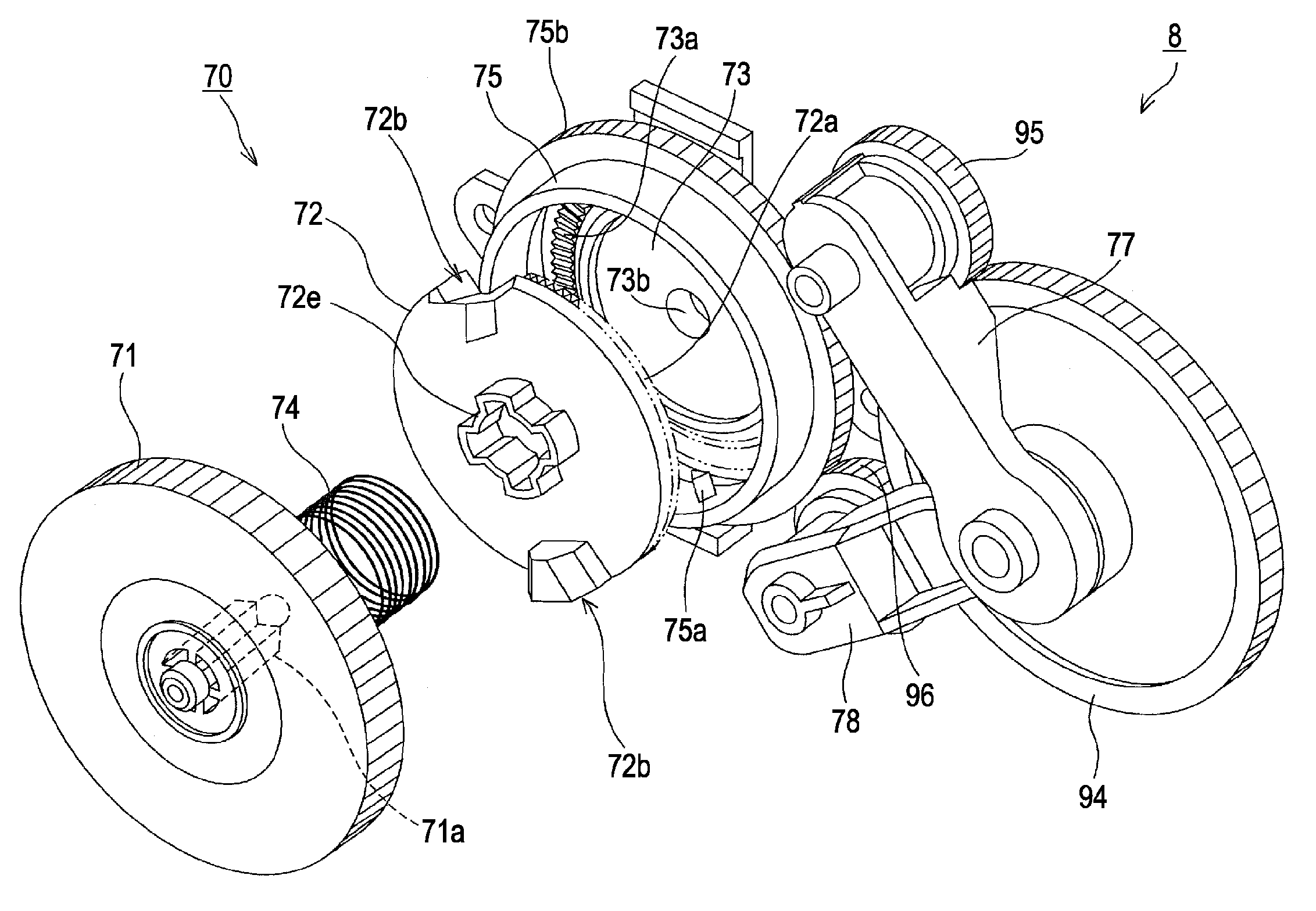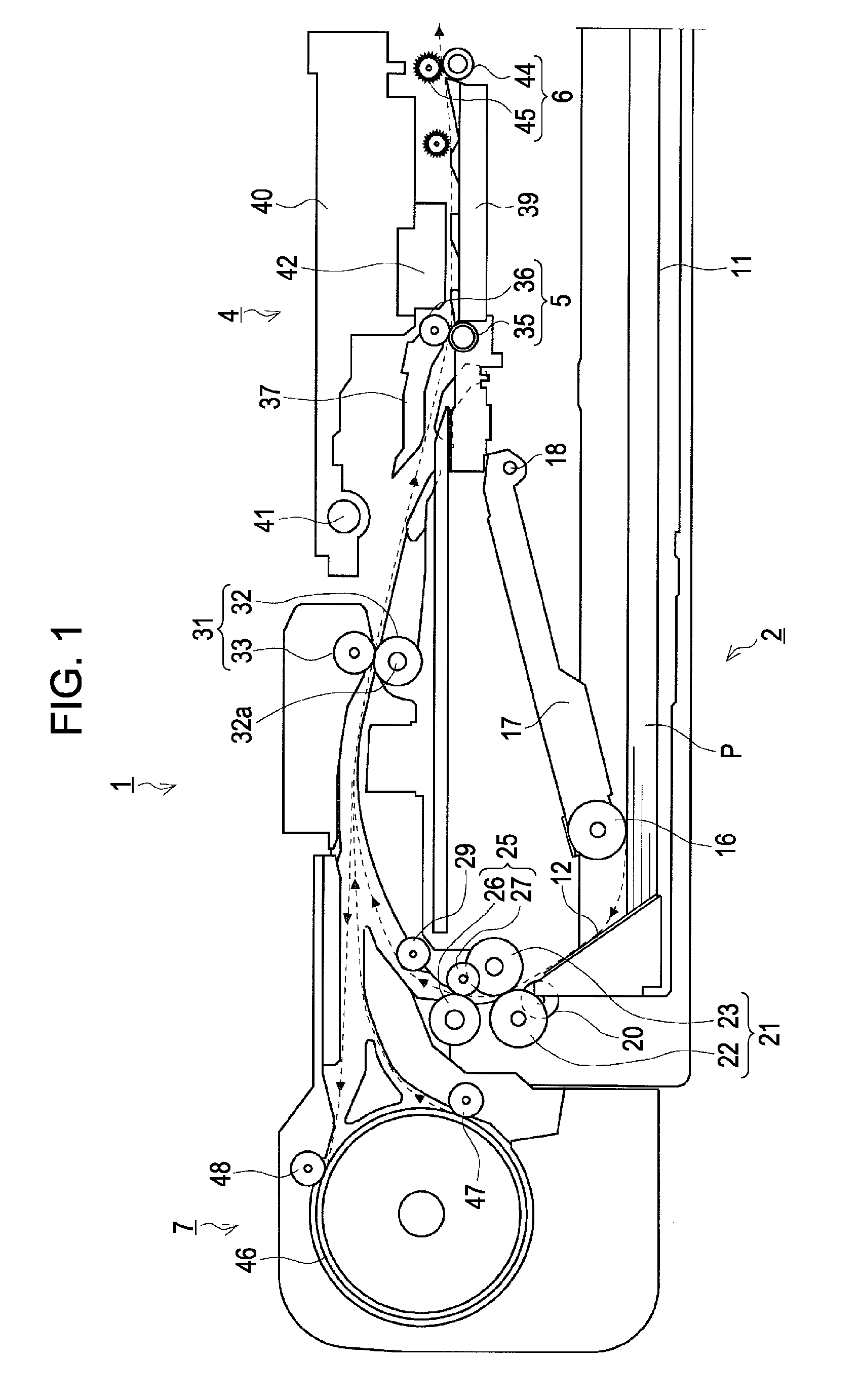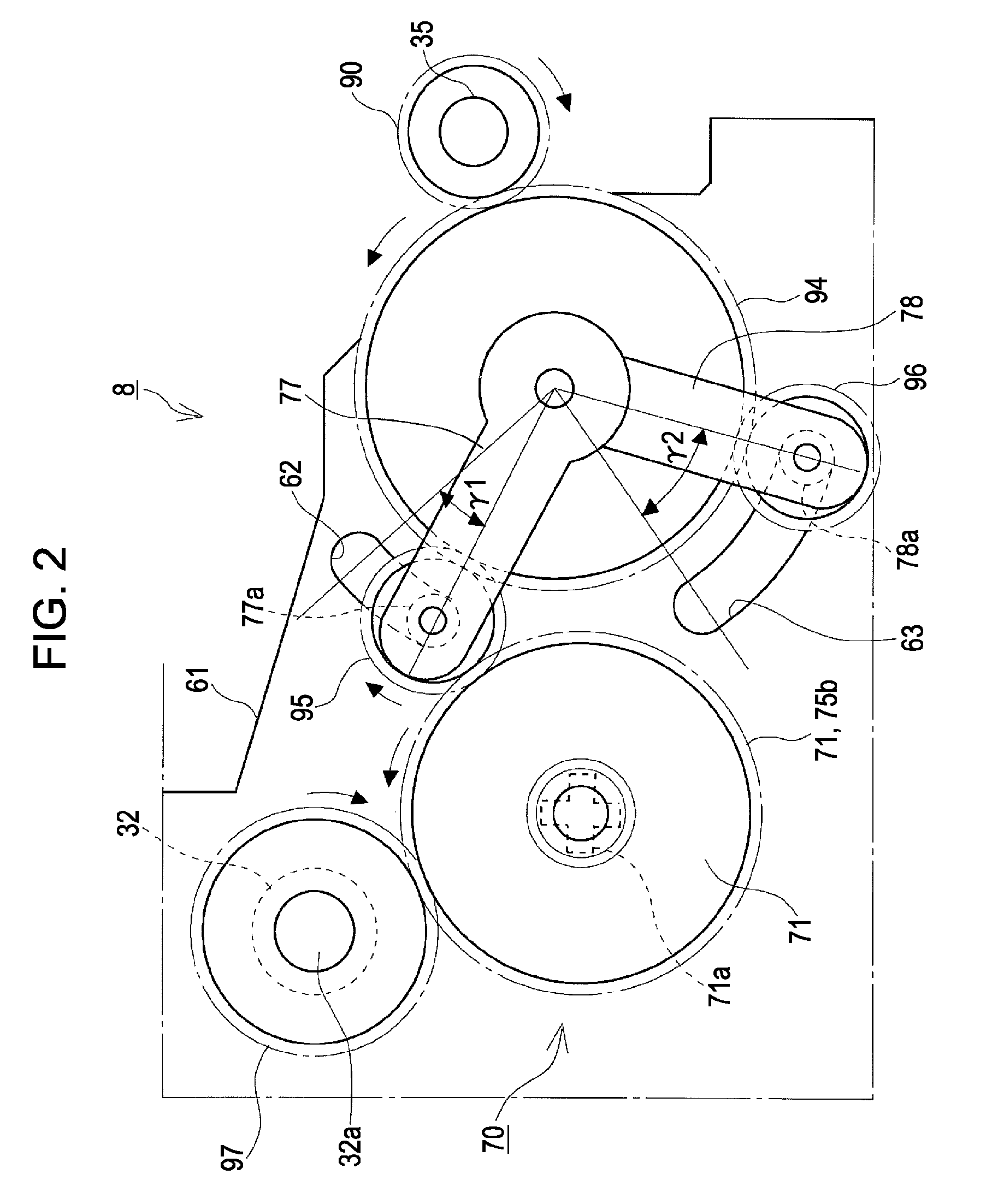Rotary shaft locking device and recording apparatus having the same
- Summary
- Abstract
- Description
- Claims
- Application Information
AI Technical Summary
Benefits of technology
Problems solved by technology
Method used
Image
Examples
first embodiment
2. First Embodiment of Locking Device
[0061]Hereinafter, a first embodiment of the invention will be described with reference to FIGS. 2 to 8B. In FIG. 2, reference numeral 61 denotes a side frame (constituting the base of the printer 1) forming a plane parallel to a sheet transport direction. The locking device 8 is provided in the side frame 61.
[0062]In FIG. 2, reference numeral 90 denotes a gear that is provided at an axial end of the transport driving roller 35. Rotary torque is transmitted from the gear 90 to the sun gear 94 constituting the locking device 8, and rotary torque is transmitted from the locking unit 70 constituting the locking device 8 to a gear 97. The gear 97 is attached to an axial end of the rotary shaft 32a of the driving roller 32. The locking device 8 is switched between an unlock state where the rotary shaft 32a is permitted to rotate and a lock state where the rotary shaft 32a is regulated to rotate.
[0063]On a left side from the gear 97 of FIG. 2, a gear w...
second embodiment
3. Second Embodiment of Locking Device
[0105]Hereinafter, a locking device 8′ according to a second embodiment of the invention will be described with reference to FIG. 9 to 15B. In FIG. 9, the same constituent elements as those described with reference to FIG. 2 are represented by the same reference numerals, and descriptions thereof will be omitted.
[0106]The locking device 8′ is different from the first embodiment in the position and configuration of the locking unit (represented by reference numeral 50). As shown in FIG. 9, rotary torque of the first planetary gear 95 or the second planetary gear 96 is transmitted to the locking unit 50 through a spur gear 93.
[0107]In FIG. 9, reference numeral 55b denotes a transmission gear corresponding to the transmission gear 75b of the first embodiment. Similarly to the locking unit 70, if the transmission gear 75b receives rotary torque from the first planetary gear 95 or the second planetary gear 96, the locking unit 50 transmits rotary tor...
PUM
 Login to View More
Login to View More Abstract
Description
Claims
Application Information
 Login to View More
Login to View More - R&D
- Intellectual Property
- Life Sciences
- Materials
- Tech Scout
- Unparalleled Data Quality
- Higher Quality Content
- 60% Fewer Hallucinations
Browse by: Latest US Patents, China's latest patents, Technical Efficacy Thesaurus, Application Domain, Technology Topic, Popular Technical Reports.
© 2025 PatSnap. All rights reserved.Legal|Privacy policy|Modern Slavery Act Transparency Statement|Sitemap|About US| Contact US: help@patsnap.com



